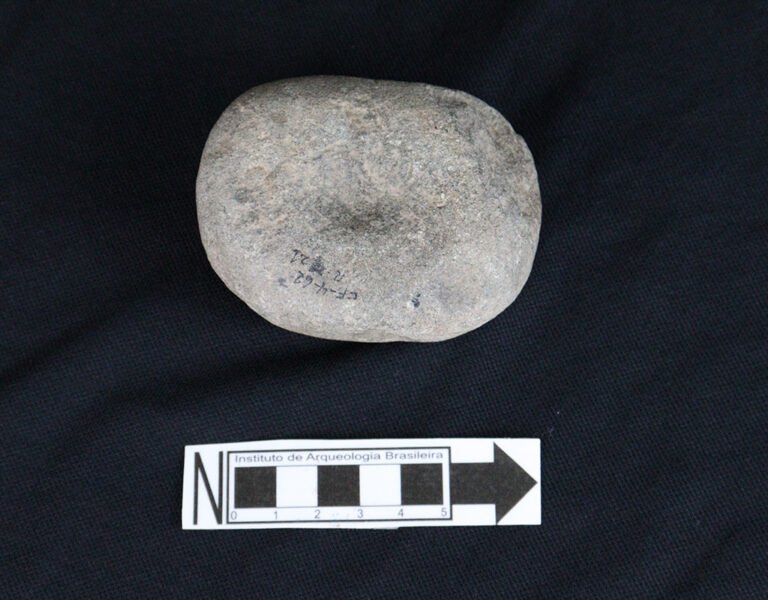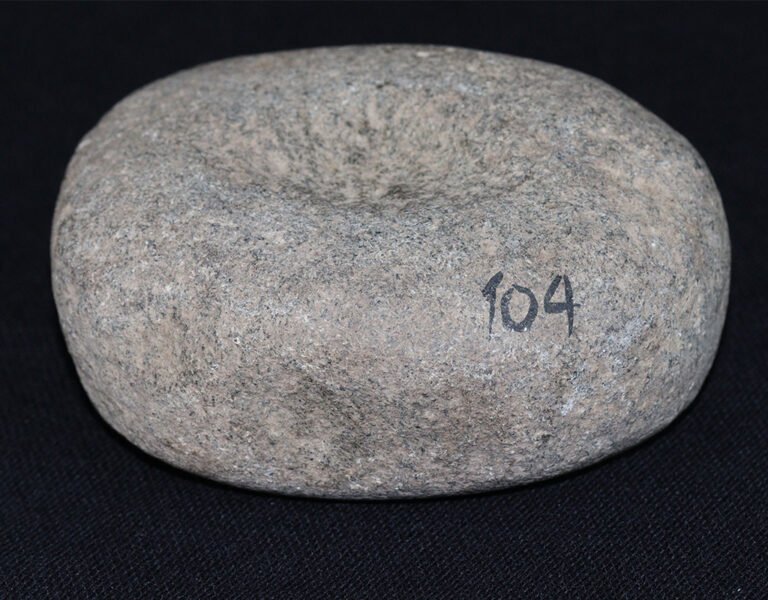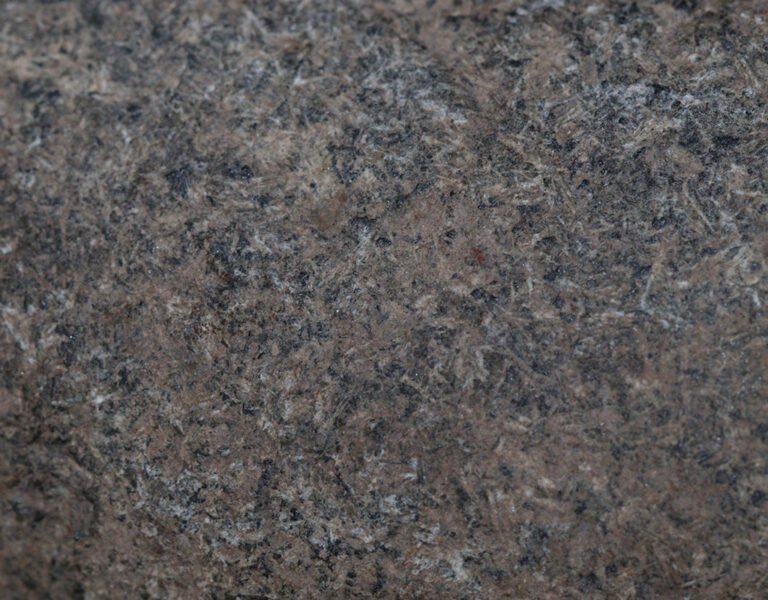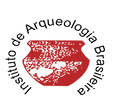Beater/Coconut breaker
Object description
The Mucuri Phase, although contemporary with the Ururaí Phase, it is characterized by occupying the mountain range of Rio de Janeiro and presenting traces of interethnic contact with people of Tupi Guarani origin in its ceramics. The environmental location of its sites allowed basketry and weaving artifacts to be preserved, as occurred in sites in the caves of the mountain range of Minas Gerais. In addition to these, it has other points of convergence with the Una Tradition also through its common ceramic, the variety of burial patterns and the evidence of the practice of horticulture.
The “coconut breaker” or “piece with cupuliform signs”, as some researchers prefer, is, actually, a pebble with flat faces and a rounded body, whose marks along its circumference characterize it as an instrument of both support and percussion. Generally, grooves are produced on both sides and gradually increased by use. It is useful for fixing a nut or seed to be broken by the impact of another pebble, or block of stone, to release its edible part. They are pieces commonly found in most archaeological societies in the country, from the oldest hunter-gatherers to the historic populations of the interior and the coast. It can functionally demonstrate the persistence of collecting “coquinhos”, hard seeds, nuts or similar, as a complementary group subsistence activity over time. This piece was collected next to a secondary burial in an urn, which bones lay tied as in a “Imbé” vine bundle, laid in a cave plateau located in the mountain range of Rio de Janeiro.
Cultural affiliation of the object
Prehistoric period
Una Tradition
Mucuri Phase
Location Cordeiro, RJ
Abrigo Bela Vista site, RJ GP 05
Level 20 – 30 cm (7,87 – 11,8)
Cultural analysis of the object
Beater type (coconut breaker)
Lithic Material
Dimension 8×5 cm (3,1 x 1,9 inches)
Relative dating 1000 – 1100 BP
IAB 1967 Collection Source
Catalog 104







